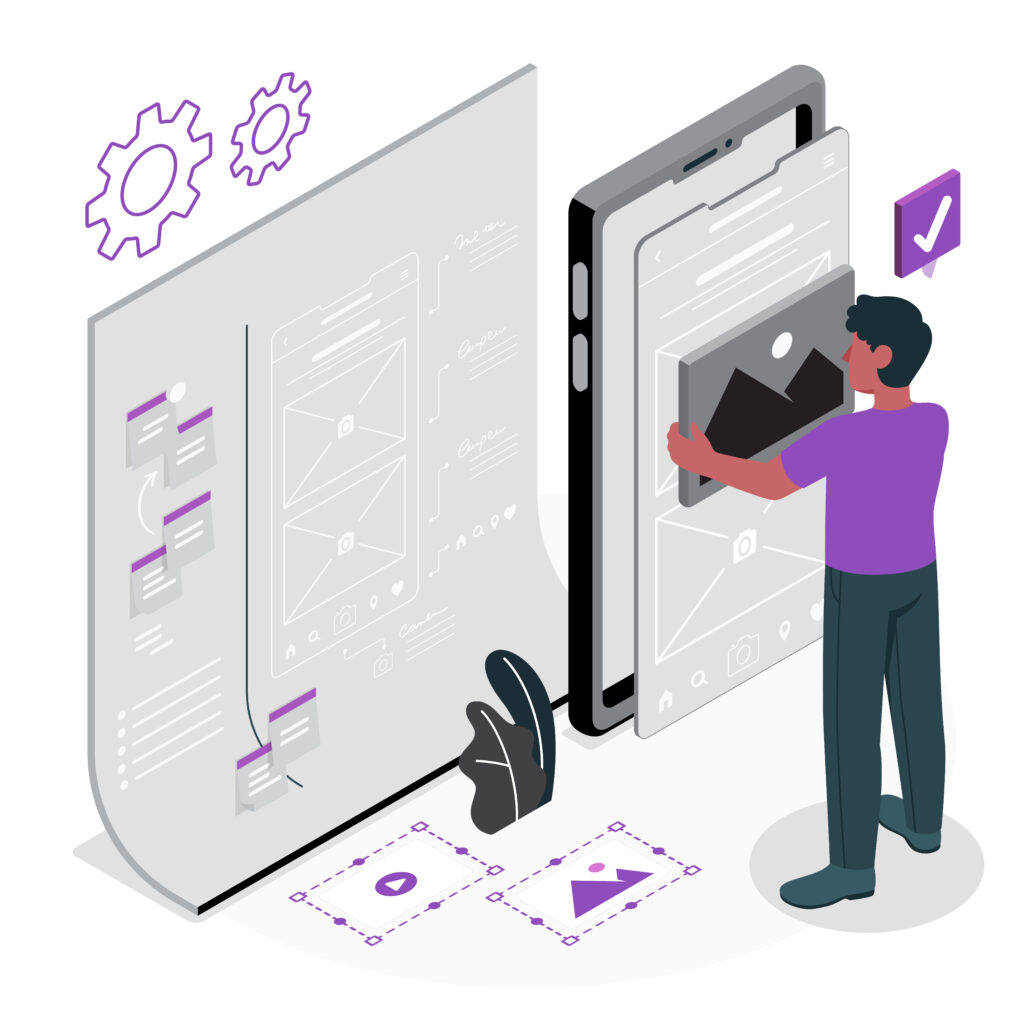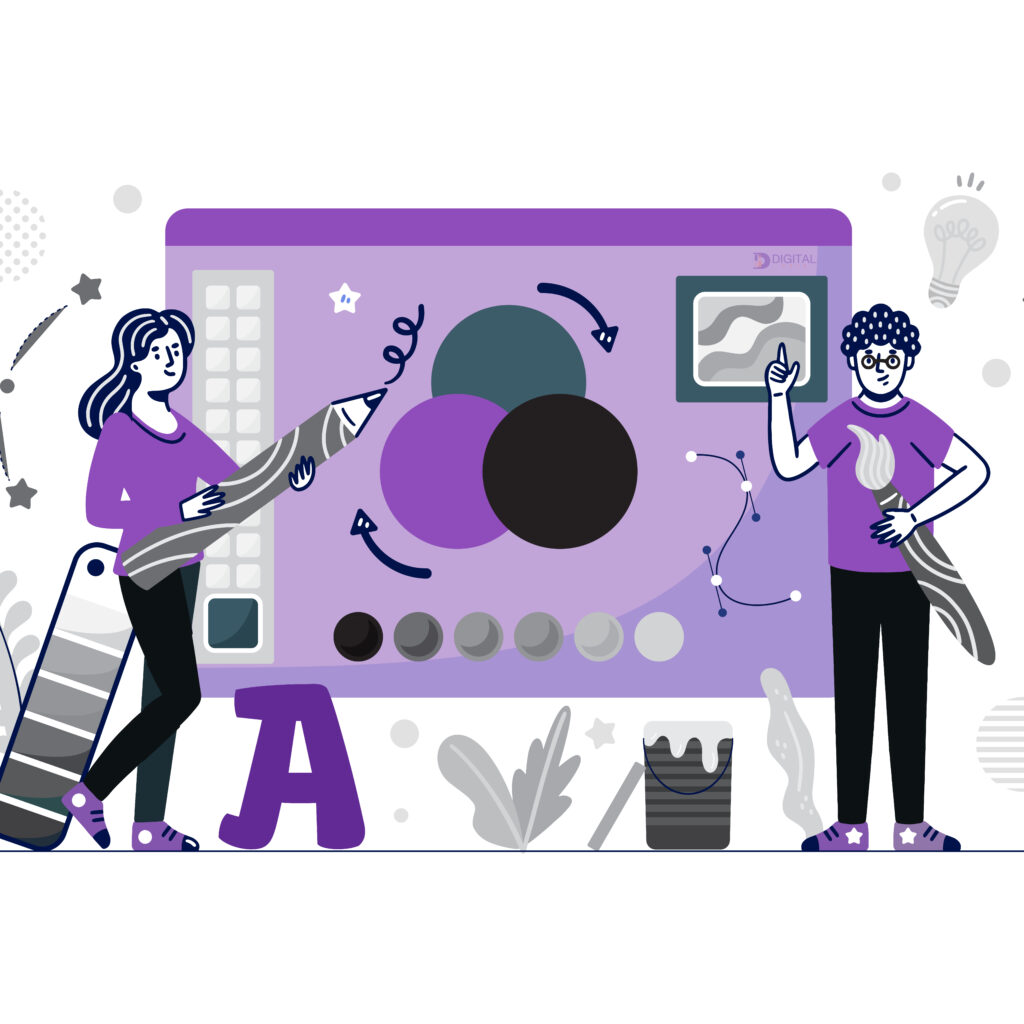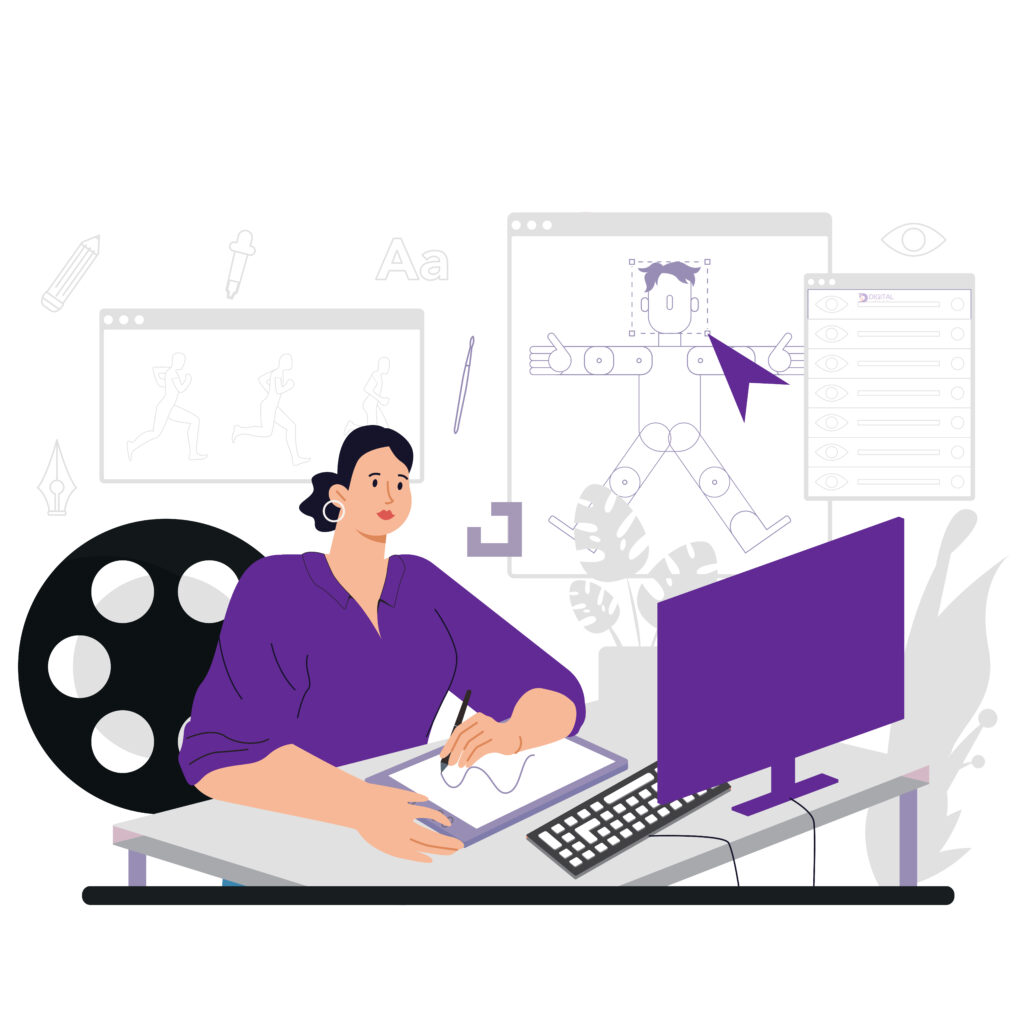The Art and Science of UI/UX Designing: Crafting User-Centric Digital Experiences and Stunning Interfaces
UI/UX designing involves more than just making digital products functional; it’s about creating experiences that are visually engaging and user-friendly. This field combines creativity and technical skills to ensure that users have intuitive and satisfying interactions.
While one aspect focuses on crafting the overall journey of the user, another hones in on the visual touchpoints—like buttons, colors, and layouts—that enhance this journey. Together, these design elements form the foundation of successful product development, ensuring every interaction feels seamless and enjoyable.

Introduction to UI/UX Designing
This section introduces the concept of designing user interfaces and experiences, which is essential in creating successful digital products. In today’s fast-paced digital world, UI/UX designing has become a critical factor in determining how users interact with websites, apps, and other software platforms.
By focusing on user-centered design principles, UI/UX designing ensures that products are not only functional but also enjoyable to use. This introduction sets the tone for understanding why good design is a cornerstone of successful digital interactions.
What is User Experience (UX) Design?
User Experience (UX) design is about crafting interactions that are smooth, efficient, and tailored to meet the needs of the end user. UX design emphasizes usability and accessibility, ensuring that every aspect of a product contributes to a positive overall experience.
It involves a series of research-driven steps, such as conducting user interviews, building personas, mapping user journeys, and testing prototypes. The primary goal is to reduce friction and make the product as intuitive as possible, ensuring users can achieve their goals effortlessly, which enhances satisfaction and loyalty.
Understanding User Needs in UX Design Explanation:
The foundation of UX design lies in thoroughly understanding the target audience. Designers engage in various research techniques to uncover user needs, pain points, and behavioral patterns. By developing user personas and journey maps, designers can predict how users will interact with a product and identify potential issues before they arise.
Methods such as focus groups, usability testing, and task analysis are employed to gain deep insights into user expectations. This understanding allows designers to create experiences that resonate with users, ultimately leading to products that are both functional and delightful.
What is User Interface (UI) Design?
User Interface (UI) design is centered on the visual elements of a product, including layout, colors, typography, and interactive components like buttons and icons. UI design transforms the wireframes created during the UX process into visually appealing and interactive designs.
The goal is to create interfaces that are both beautiful and easy to use, enhancing the overall experience by guiding users through the product. UI designers pay attention to detail, ensuring that every visual element contributes to an aesthetically pleasing and intuitive user journey.
Creating Visually Appealing Interfaces in UI Design
A core aspect of UI design is making sure that the interface not only functions well but also looks appealing. This involves the strategic use of color palettes, fonts, spacing, and imagery to create a cohesive visual style that aligns with the brand’s identity. Designers employ principles such as balance, contrast, and visual hierarchy to draw users’ attention to key elements and guide their actions. By creating interfaces that are not just attractive but also easy to navigate, UI designers enhance the user’s interaction with the product, making the experience memorable and engaging.
Key Differences Between UI and UX Design
While UX and UI design are closely related, they serve distinct roles in the design process. UX design focuses on the overall feel of the experience, ensuring that the product meets user needs and provides value. In contrast, UI design is concerned with the look and interactivity of the product, making sure that it is visually engaging and easy to use.
This section delves into how these disciplines complement each other, with UX defining the structure and flow of the user journey, while UI brings it to life through visual elements and interactive design. Understanding these differences is crucial for anyone pursuing a career in design.


Prototyping and Testing in UI/UX Design
Prototyping and testing are crucial steps in the design process that bridge the gap between ideas and implementation. Prototypes allow designers to create a tangible version of their designs, enabling them to test and refine concepts before final development.
Through usability testing, designers can observe how real users interact with the prototype, identify pain points, and make necessary adjustments. This iterative process helps ensure that the final product not only looks great but also functions seamlessly, meeting both the user’s needs and the project’s goals.
Essential Skills for UI/UX Designers
Explanation: To succeed in UI/UX design, designers must possess a blend of technical and interpersonal skills. Technical skills include proficiency in design software like Sketch, Figma, and Adobe XD, as well as knowledge of wireframing, prototyping, and usability testing. However, soft skills are equally important; designers need to be empathetic, good communicators, and adept at problem-solving.
This section explores the diverse skill set required to excel in UI/UX design, highlighting the importance of continuous learning and adaptability in a rapidly evolving field.
User Research and Its Impact on UX Design
User research is the backbone of UX design, providing the insights needed to create effective and user-friendly products. By conducting interviews, surveys, and observational studies, designers can gather qualitative and quantitative data that inform design decisions.
This research-driven approach helps identify the needs, motivations, and behaviors of users, ensuring that the design is grounded in real-world requirements. Incorporating feedback loops into the design process allows for continuous improvement, ultimately leading to products that are closely aligned with user expectations.
The Role of UI/UX Design in Product Development
UI/UX design plays a pivotal role in product development by bridging the gap between users and technology. Designers work closely with developers, product managers, and other stakeholders to ensure that the design aligns with technical capabilities and business objectives.
This section examines how integrating UI/UX design early in the development process can reduce costs, improve user satisfaction, and create a more cohesive product. By focusing on both the user’s journey and the interface’s usability, UI/UX design helps create products that are both functional and engaging.
The Collaborative Nature of UI/UX Design
Collaboration is at the heart of UI/UX design, as it involves working across various teams to bring a product to life. Designers frequently communicate with developers to ensure that design specifications are technically feasible, and with marketing teams to align the visual style with brand messaging. This subheading explores the collaborative dynamics within UI/UX design, emphasizing the importance of teamwork, clear communication, and a shared vision in creating successful products.
Tools and Techniques Used in UI/UX Design
The world of UI/UX design is supported by a wide array of tools and techniques that help streamline the design process and enhance creativity. From wireframing tools like Balsamiq to prototyping platforms such as Figma and Sketch, designers have a plethora of options to bring their ideas to life.
This section delves into the various tools that designers use at different stages of the design process, highlighting how these technologies facilitate collaboration, testing, and refinement.


Designing for Different Devices and Platforms
A critical aspect of UI/UX design is ensuring that products are adaptable across various devices, including mobile phones, tablets, and desktops. Responsive and adaptive design principles are used to adjust the layout, navigation, and functionality to fit different screen sizes and orientations.
This subheading discusses the challenges and strategies involved in creating designs that provide a consistent and seamless experience, regardless of the device or platform being used.
Future Trends in UI/UX Designing
UI/UX designing is constantly evolving, with new trends shaping the way designers approach their work. Emerging technologies like artificial intelligence, virtual reality, and voice interfaces are beginning to influence UI/UX, offering new ways to engage users.
This section explores future trends in design, such as personalized user experiences, minimalistic interfaces, and the growing importance of ethical design practices. As the field advances, staying ahead of these trends will be crucial for designers who want to remain competitive.
Measuring Success in UI/UX Design
The effectiveness of UI/UX design can be measured through various metrics, including user engagement, task success rates, and overall satisfaction. This subheading discusses how designers can utilize analytics, A/B testing, and user feedback to evaluate their designs and make data-driven improvements.
Understanding these metrics helps ensure that the design continues to meet user needs and business goals, leading to more successful and impactful products.
Tools and Techniques Used in UI/UX Design
The world of UI/UX design is supported by a wide array of tools and techniques that help streamline the design process and enhance creativity. From wireframing tools like Balsamiq to prototyping platforms such as Figma and Sketch, designers have a plethora of options to bring their ideas to life.
This section delves into the various tools that designers use at different stages of the design process, highlighting how these technologies facilitate collaboration, testing, and refinement.


Why Choose Digital Help Ltd. for UI/UX Design?
Choosing the right UI/UX design partner may have a big influence on the success of your digital product. Digital Help combines creativity, technological competence, and a thorough understanding of user behavior to create designs that meet and surpass your expectations. Our team is dedicated to building attractive and functional user experiences that help your product stand out in a competitive market.
Our dedication to knowing your customers and brand sets us apart. We take the time to learn about your company, objectives, and target audience, ensuring that every design choice is data-driven and in line with your vision. Whether introducing a new product or redesigning an old one, we collaborate directly with you to produce a design that genuinely connects with your customers.
At Digital Help, excellent design is a continuous process. We’re here to help you every step of the way, from the original idea to final delivery and beyond. Our commitment to ongoing development guarantees that your digital product stays current and valuable, allowing your company to prosper in the digital age.